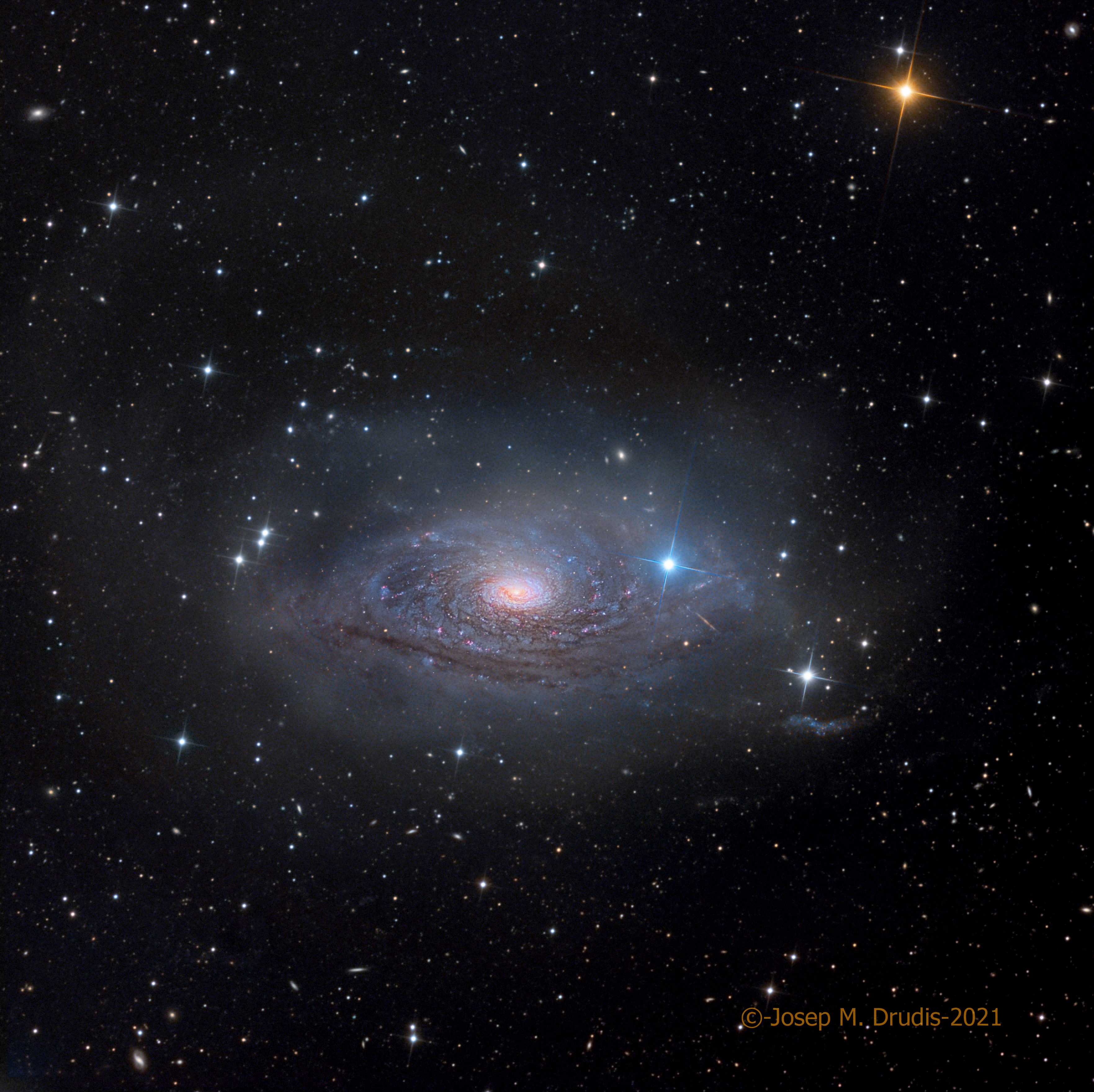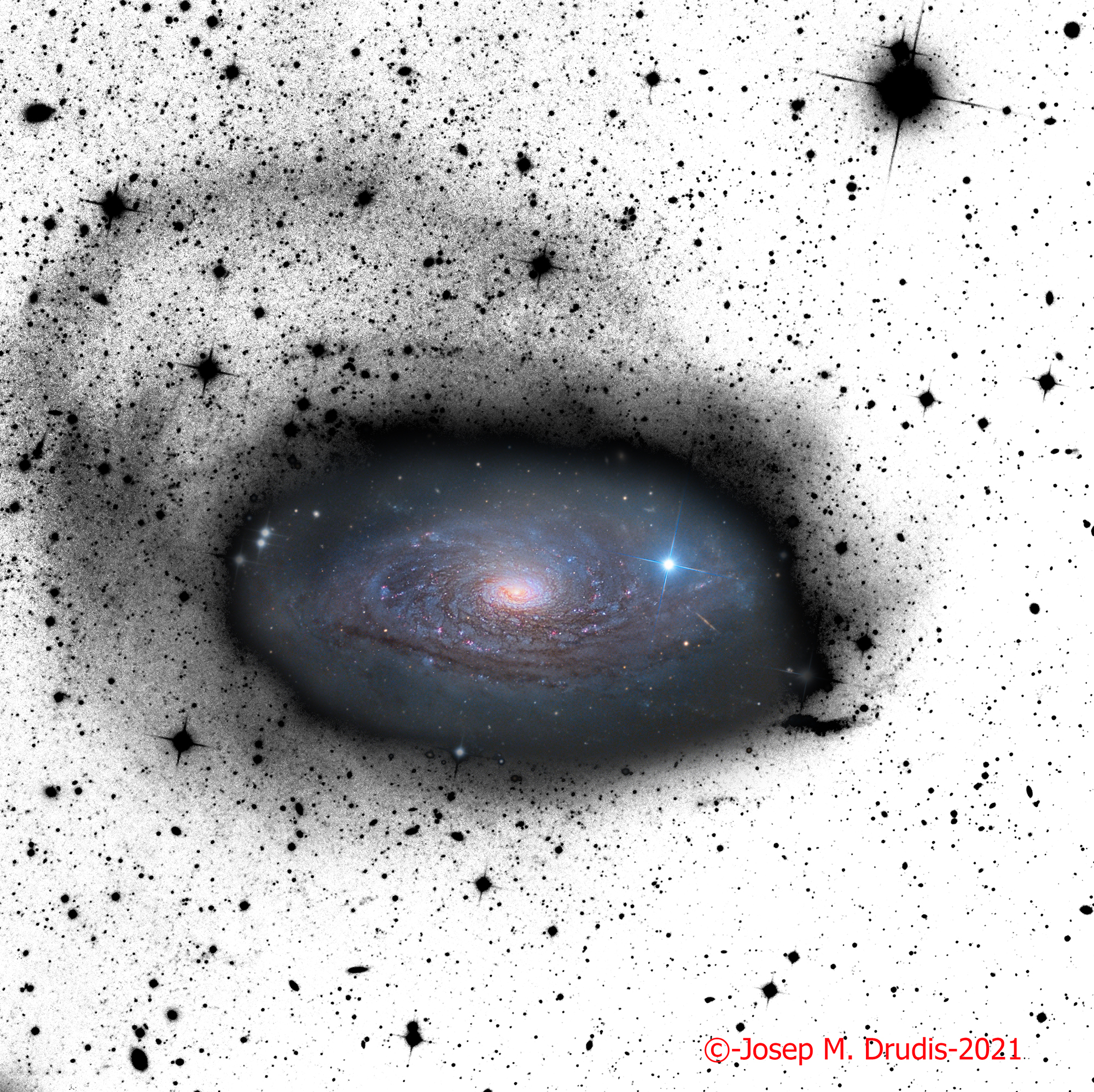 Click on the image for a full resolution version
Click on the image for a full resolution version
Messier 63 (M63) is a Type-SAbc “flocculent” spiral galaxy. Flocculent galaxies are spirals that do not show definite arms. They do show a spiral structure, but the “arms” have many ramifications and fade as they wind to the outer regions of the galaxy. Two more examples of galaxies that show the same property are NGC 253 and NGC 3521. This property, however, is true for the visible light. This galaxy shows two clear arms that go all the way to the outer regions, but only in the infra-red light. M63 is a galaxy with an active nucleus and is classified as LINER (Low-Ionization Nuclear Emission-line Region). The presence (or not) of a supermassive black hole (SMBH) in its center is still under discussion, with a potential SMBH with 800 million solar masses as candidate.
As it can be seen in the image, M63 is surrounded by a star stream that was discovered in 2011 as the result of a ProAm collaboration. This star stream was originated by the collision or accretion of a smaller galaxy with M63. It can be better seen in the negative image below (the galaxy itself has been superimposed in color for a better representation).
Additional Information
Object
Name(s): Messier 63. M63. NGC 5055. The Sunflower Galaxy
Type: Spiral Galaxy Type-SAbc
RA: 13h 15m 48s
Dec: +42º 02’ 06”
Constellation: Canes Venatici
Size (arcmin): 13×7.5 arcmin
Magnitude: +8.6
Distance: 28 Mly
Image
Date: 2020-05-16 to 2020-07-08
Location: Curiosity2 Observatory, New Mexico Skies, Mayhill, NM, USA
Size (arcmin): 27.5×27.5 arcmin
Telescope: 24” (61 cm) f/6.5 Reflector
Camera: FLI PL16803 (4096x4096pix)
Guiding: Astrodon MonsterMOAG off-axis guider
Total exposure: 24h 50m (L: 9h; Ha: 6h 30m; RGB: 9h 20m)
Processing: CCDStack, Photoshop CC 2021
